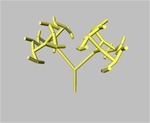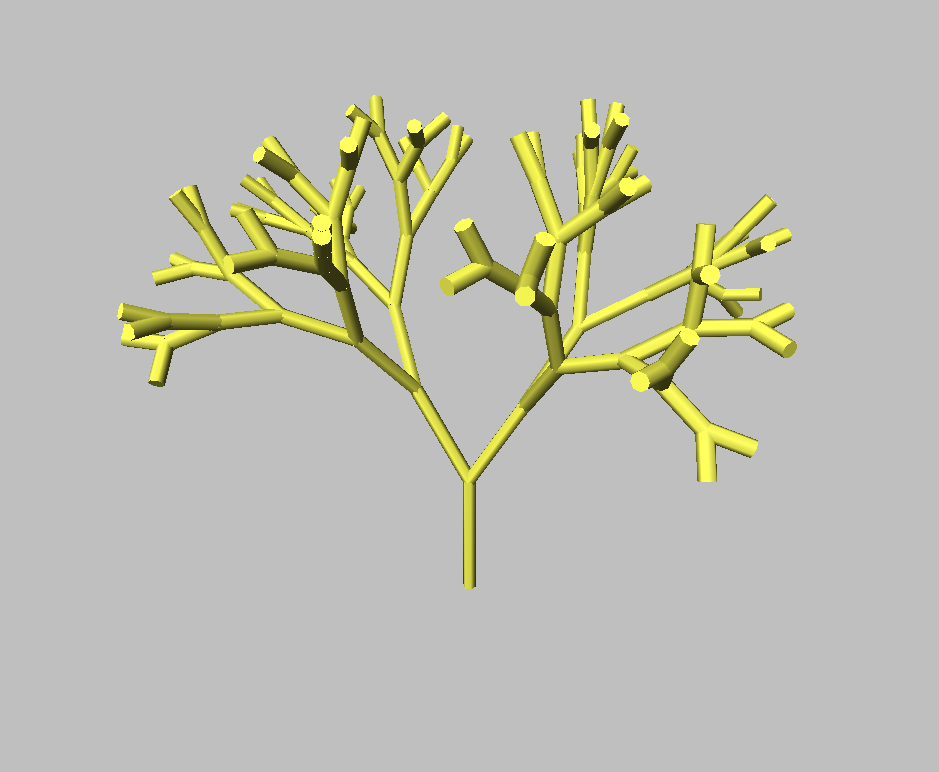Copy/Paste the following code to your GroIMP project:
//**********************************************************
/* You will learn:
– how random variables can be used in different ways.
*/
module A(float x);
protected void init()
[ Axiom ==> A(1); ]
// Example 0: growth is precisely specified without variation.
public void run0()
[
A(x) ==> F(x) [ RU(30) RH(90) A(0.8*x) ] [ RU(-30) RH(90) A(0.8*x) ];
]
// Example 1: For each RU command, an individual angle is taken
// (random number between 0 and 60).
public void run1()
[
A(x) ==> F(x) [ RU(random(0, 60)) RH(90) A(0.8*x) ]
[ RU(-random(0, 60)) RH(90) A(0.8*x) ];
]
// Example 2: For each rule application (i.e., for each A
// (for each match of the left-hand side)) an angle is taken,
// which is used for both RUs.
public void run2()
[
A(x) ==> F(x) {float w = random(0, 60);}
[ RU(w) RH(90) A(0.8*x) ] [ RU(-w) RH(90) A(0.8*x) ];
]
// Example 3: For each call of “run” the angle is taken once
// and will be used for each rule application.
void run3()
[
{ float w = random(0, 60); }
A(x) ==> F(x) [ RU(w) RH(90) A(0.8*x) ] [ RU(-w) RH(90) A(0.8*x) ];
]
// Example 4: 2 method calls.
// The method runW(w) is called by run4() and run5(), respectively, and gets
// w as parameter. This parameter is then used in each rule application.
// Please notice: runW does not appear as a button, because it has a
public void runW(float w)
[
A(x) ==> F(x) [ RU(w) RH(90) A(0.8*x) ] [ RU(-w) RH(90) A(0.8*x) ];
]
public void run4()
{
runW(random(0, 60));
}
public void run5()
{
for (apply(1)) runW(random(0, 60));
for (apply(1)) runW(random(0, 60));
}
//**********************************************************




